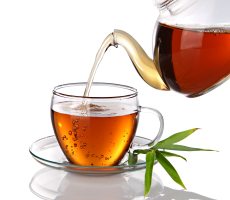U.S. Patent 5,663,197
Granted to Taheebo Japan Co., Ltd. on September 2, 1997.
The present invention relates to a novel compound possessing antitumor activity, and an antitumor agent comprising said compound.
________________
U.S. Patent 6,656,485
Granted to Euro-Pharma S.r.l. on December 2, 2003.
Products for body hygiene containing Lapacho extracts and also quercitine and possibly other quinones present in Lapacho extracts salified or whatever modified in order to make them soluble in water are described. The preparation of the above said compounds and their use is also described.
________________
U.S. Patent 6,875,745
Granted to Dana Farber Cancer Institute, Inc. on April 5, 2005.
.beta.-lapachone, a quinone, is derived from lapachol (a naphthoquinone) which can be isolated from the lapacho tree (Tabebuia avellanedae), a member of the catalpa family (Bignoniaceae). Like camptothecin and topotecan, .beta.-lapachone inhibits DNA Topoisomerase I (Li, C. J., et al., J. Biol. Chem., 1993). This compound has been found to be effective against several types of cancer cells in vitro, including lung, breast, colon and prostate cancers and malignant melanoma (Li, C. J., et al., Cancer Research 55:3712-3715 (1995) and unpublished data).
________________
U.S. Patent 5,969,163
Granted to Wisconsin Alumni Research Foundation on October 19, 1999 .
The present invention is drawn toward novel tricyclic naphthoquinone derivatives, a synthetic method for making the derivatives, and use of the derivatives to inhibit neoplastic cell proliferation. The naphthoquinone derivatives of the present invention are related to the compounds known by their trivial names as .beta.-lapachone .beta.-lapachone is a naturally occurring product which can be found in small amounts in the lapacho tree (Tabebuia avellanedae) of South America. .beta.-Lapachone may also be readily synthesized from lapachol (3), an abundant quinone which is also found in the lapacho tree.
________________
U.S. Patent 5,763,625
Granted to Wisconsin Alumni Research Foundation on June 9, 1998 .
Lapachol (1) is a natural product known since 1858 and is the most abundant quinone found in the heartwood of several genera Bignonoceae. Its name is derived from the “lapacho” tree (Tabebuia avellanedae Lr. ex. Griseb), a tree found mainly in subtropical and tropical South America (Northern Argentina, Paraguay, and Brazil). The yellow lapachol confers its color to the wood where it is sometimes visible in yellow deposits. The structure of lapachol has been known and its antitumor properties raised considerable interest in the past, having reached the stage of clinical trials. When treated with sulfuric acid it cyclizes to .beta.-lapachone (2a), also present in the heartwood of the lapacho tree. Lapachol can also be converted into 3-bromolapachone (2b), and the latter can be converted in a two-step sequence into 3-hydroxy-.beta.-lapachone (2c). The alcohol group of 3-hydroxy-.beta.-lapachone is amenable to etherification when treated with alkyl halides in dry dimethyl sulfoxide in the presence of potassium hydroxide powder. It was found that it is possible to alkylate the 3-hydroxy residue of 3-hydroxy-.beta.-lapachone without ring opening of the .beta.-lapachone structure by avoiding alkaline reaction media which are usually necessary in etherification or esterification procedures. It was thus possible to obtain methyl, benzyl, and allyl ethers (2d) of 3-hydroxy-.beta.-lapachone, as well as .beta.-ethoxycarbonyl derivatives (See Synthesis 1). In synthesis 1 and 2 R is as previously defined herein. What makes this approach attractive is that lapachol is a relatively abundant natural product. In the heartwood of the abundant South American lapacho tree, its content varies between 3% (in subtropical South America) to 7% (in tropical South America). These values should be compared with those for camptothecin (0.01% in the stem wood of C. accuminata) or in taxol (0.02% in the bark of the American western yew).
________________
Japan Patent 2,669,762
Taiwan Patent 092054
China Patent 092054
Granted to Taheebo Japan Co., Lted., Shinichi Ueda on July 4, 1997 (Japan) and April 30, 1998 (Taiwan, China).
Ingredients of natural bark tea TAHEEBO contain various useful elements. One of them is naphthofuran dione (NFD), a component of quinine, a coloring agent. NFD is known to play an effective role in maintaining people’s health. A research team of Taheebo Japan has confirmed that NFD can only be found in the inner layer of the bark of Taheebo trees. NFD has been patented in the USA, Japan and Chinese Taipei. In Japan, Taheebo Japan Co., Ltd. holds its patent and TAHEEBO is the only natural bark tea containing NFD. ________________

